Annabelle Tan Kai Lin
A Working Archive of Design, Research and Thoughts
A Working Archive of Design, Research and Thoughts
Wetland Frontier
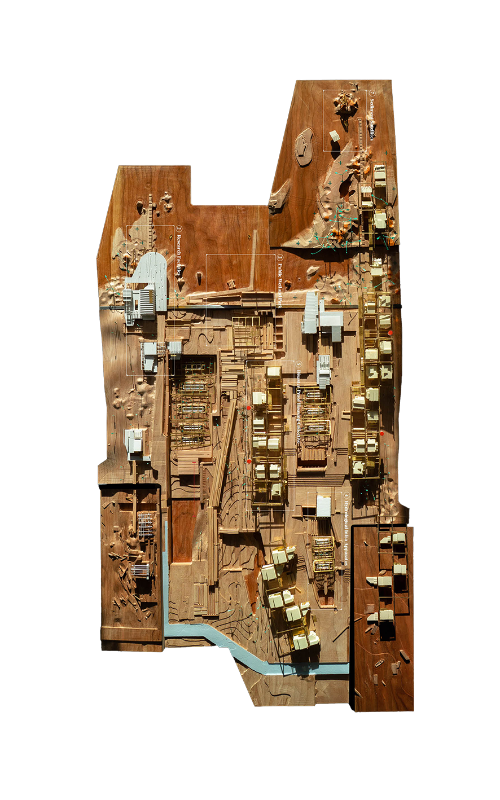
Straddling a 6-foot levee, the multi-programme proposal aims to facilitate the regeneration of the Lower Ninth Ward community in New Orleans and the adjacent Bayou Bienvenue Wetland Triangle. It is a speculative masterplan centred around socio-ecological resilience that challenges our attitudes towards nature and the dominant approach towards disaster-prevention and landscape engineering, to become an exemplar for the city of New Orleans and wetlands around the globe.
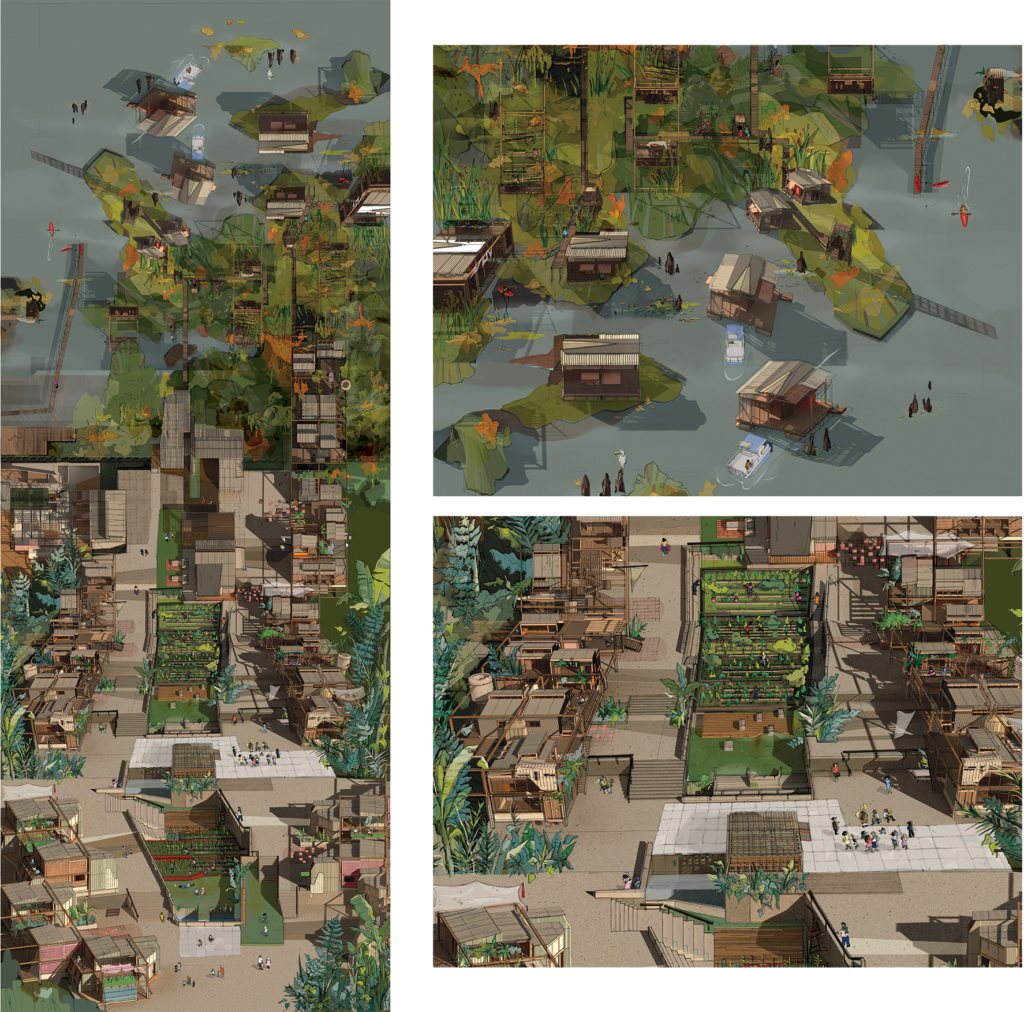
Seeding the Wetlands. Growing the Community
The Lower Ninth Ward’s history has been largely entwined with the Bayou Bienvenue which borders north of the neighbourhood. Bayou Bienvenue was once a thick cypress swamp that housed a community of runaway slaves during colonial times. This dense cypress swamp has been in decline since the mid-1900s, largely attributed to the construction of the Mississippi River Gulf Outlet and the Industrial Canal. As a response to New Orleans’s troubled relationship with nature, disaster and climate change, the project re-imagines an inhabitable landscape centring around this lost wetland, simultaneously giving new life to the under-served Lower Ninth Ward community.
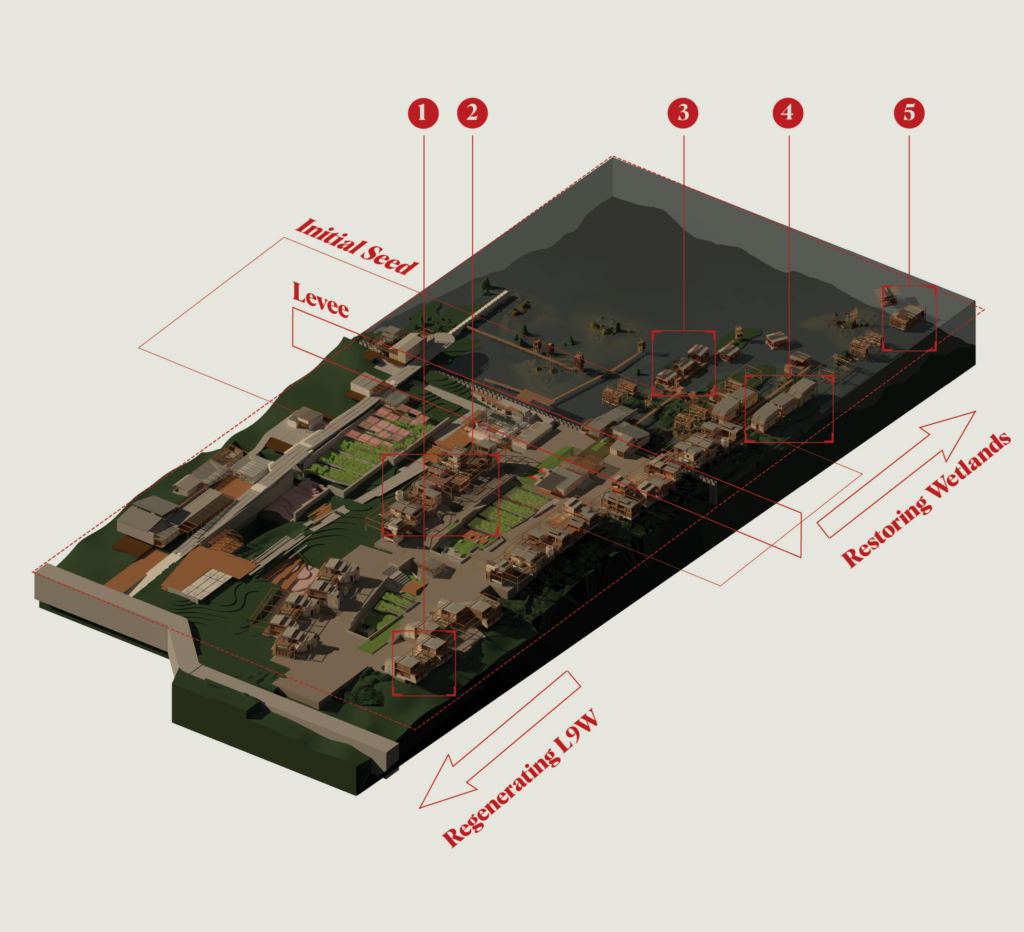
01
A Model for Delta Urbanism
Delta urbanism is an ambiguous term used frequently in post-Katrina research literature exploring the relationship between New Orlean’s precarious geographic location and its ideal resilient urban form. This proposal is an investigation into delta urbanism as a new paradigm of space-making in the Lower Ninth Ward, challenging what that means in terms of ecology, social systems and the built environment.
Hydrological Infra-Apparatus
The scheme puts restoration of this unique urban wetland – a natural, self-sustainable resource – as the cornerstone of value-creation to attract long-term, sustained interest from multiple stakeholders. The buildings sit on top of infrastructure that cultivates a more sustainable relationship between people and nature. Plant nurseries, water-activated spaces and collective water tanks underpin the scheme’s restorative purpose and also act as an apparatus to read the environment. By allowing water management to become human-scaled and observable, a more personal, empowered approach to landscape engineering is created, challenging the brutal flood defence systems built around New Orleans.
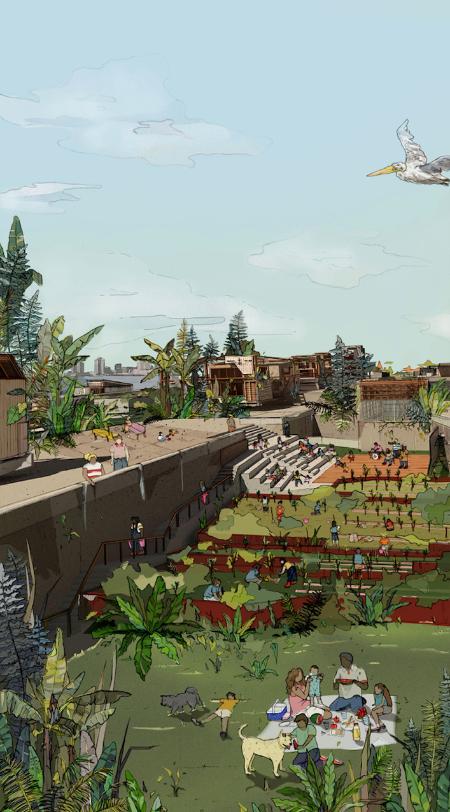
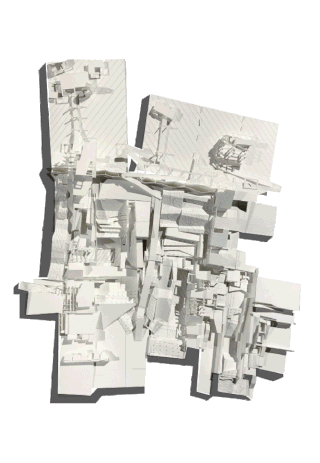
A Pioneering Wetland Community
As this nascent community grows and gains legitimacy as a new way of living with nature, the ultimate ambition of the proposal is to facilitate the regeneration of the larger community with the same attitude towards community cohesion and environmental stewardship. Multiple iterations of master plan schemes were made to balance the need for conviviality against an appropriate density for the area.

Metabolic Systems for Environmental Stewardship
The scheme matches human-generated activities to the needs of wetland restoration, creating two main systems – hydrological and vegetation/sediments. The infrastructure does not fight nature but rather accommodates its changes to create a landscape harmonious with both people and nature. In turn, inhabitants are empowered by this infra-apparatus to embrace and navigate this new augmented landscape.
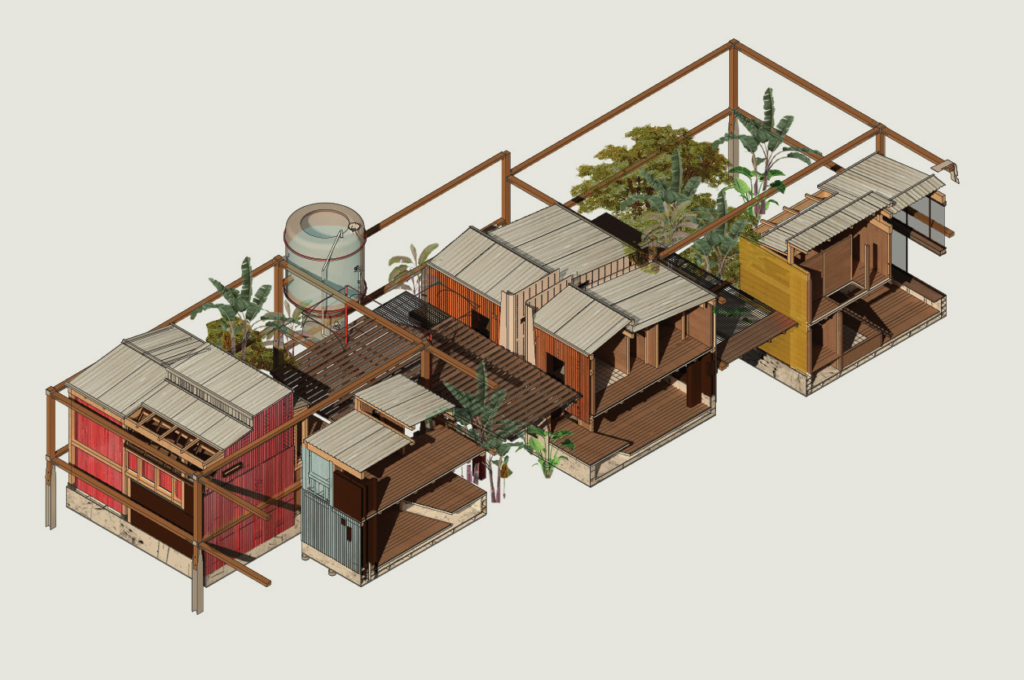
02
A Resilient Housing Collective
Urban resilience is forged not only from
disaster-proofing the architecture we live in, but also from the ties that bond us to a place. Going against the typical practice of raising single-family housing stock to increasingly greater heights, this dense communal-living scheme subverts New Orleans’s approach to both physical and social resilience.
Forging a Socio-Ecological Resilience
The housing development features a range of shared spaces and facilities that vary in intimacy, from outdoor verandas shared by four apartments to a large common kitchen with outdoor open space for parties. Inhabitants are able to act out familiar habits like barbecue parties in this new eco-urban landscape, collectively forging a new culture that, even if unconsciously, centres stewardship over nature.

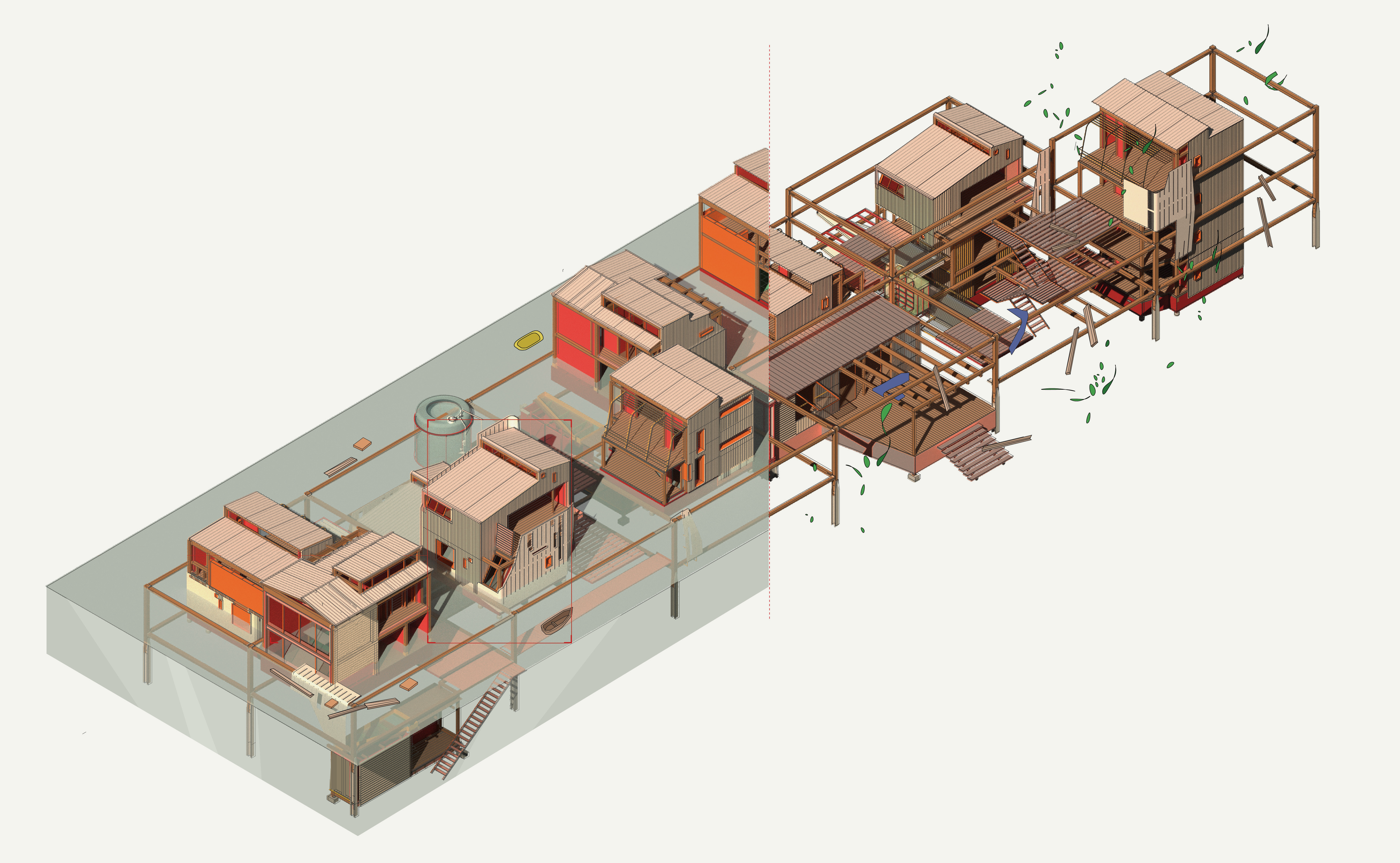
Riders on the Storm
Physical resilience of the scheme is founded on ecological principles of resilience in natural systems that can resist and recover from shock. The structural strategy is the result of transferring these principles into a coherent built network of ‘resiliences’ that respond appropriately to a gradation of natural changes.

Dynamic Demographics and Housing Prototypes
The initial seed contains single apartments, co-living units and volunteer hostels for the first few years of wetland restoration involving employees, youths and different cycles of volunteers. As inhabitants grow attached to this unique way of life, the scheme expands to provide more permanent living situations, including family houses. The community grows towards the Lower Ninth Ward as people decide to move permanently and settle down, becoming integrated into the local community.
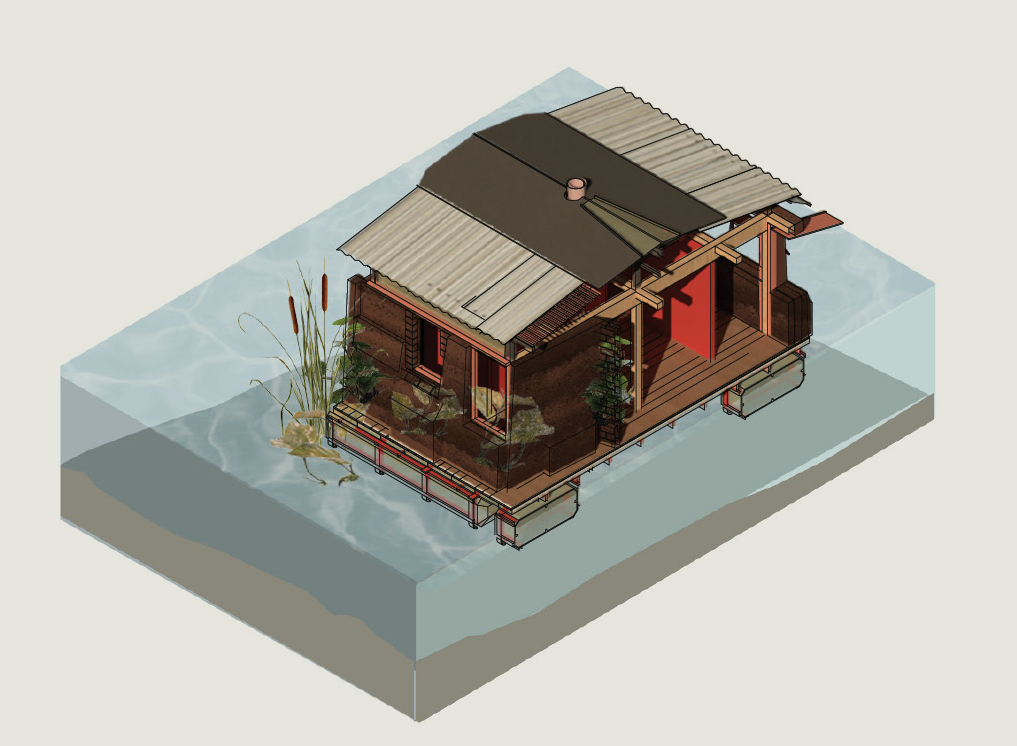
03
Sediment Satellites
Erosion, transportation and sediment deposition are crucial to the formation of wetlands. These natural processes were studied and mimicked to create a choreographed landscape of decay and growth that would feed land and vegetation back into the wetlands. Architecture is pushed in its ability to become an ephemeral instrument to achieve a restored landscape in which the architecture itself serves a diminishing role over time.
Landscapes of Decay, Growth and Rebirth
Current wetland restoration efforts like dredging are highly expensive and often do more harm to the environment than good. Hence, a softer, less intrusive method is explored through transporting sediments as smaller ‘architectural’ units, like bricks or tiles. A long-stay hostel might become a station for continual replacement of silt tiles as volunteers choose to lengthen their stay; vegetation flourishes around them as days pass. Half-exposed sediment banks might become fishing towers or bird-watching spots. A minimal boardwalk connects these satellites, creating a playground for exploration and appropriation of these structures.



Prototyping Sediment Satellites
The restoration strategy uses three types of instruments that differ in rate of decay, structures used and remnants left behind. To achieve a design that is ambitious yet convincing, the decision-making process was heavily informed by material testing and 1:1 making using actual river silt. This testing of different construction methods, structural systems, material composition and forms provided the backbone of knowledge that grounds further architectural speculation.